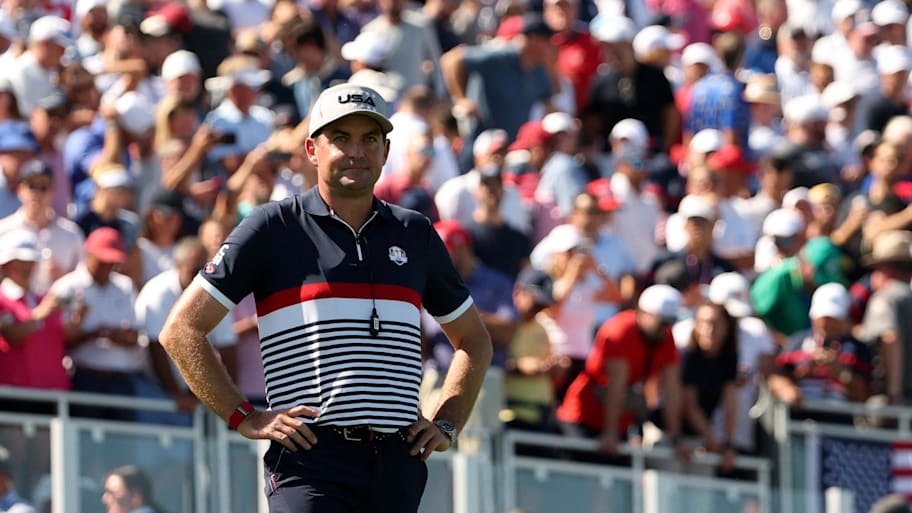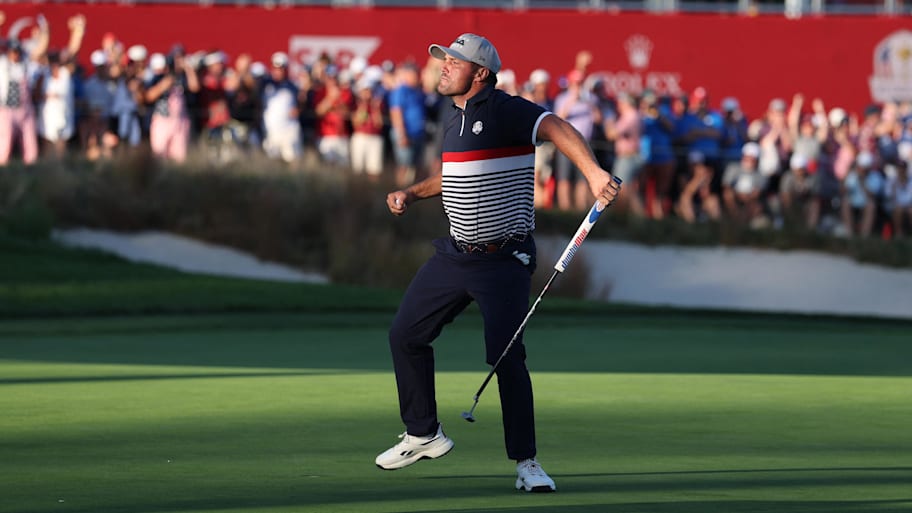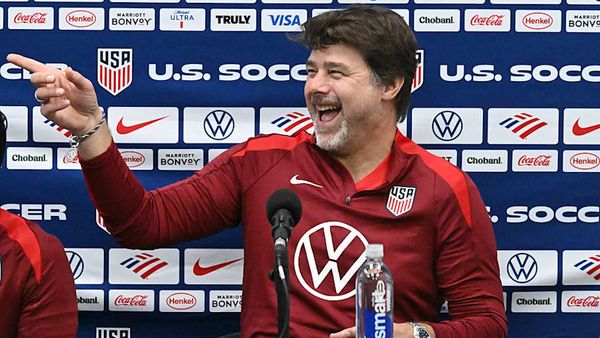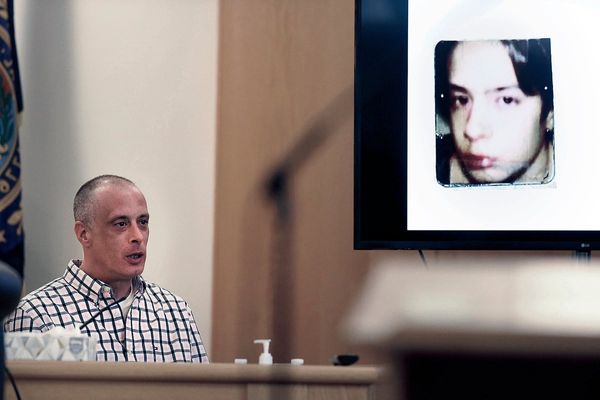
USA Network took the airwaves before most had eaten breakfast on Friday morning and painted the cinematic scene American fans have been dreamcasting for several years. Bryson DeChambeau, all steel and horsepower, strode up to the opening tee and launched a rocket toward the green. It was every bit a screaming-eagle-scored fantasy come to life for those who have circled Team USA’s chance to defend home soil at Bethpage after suffering bitter defeat in Rome two years ago at the hands of their cross-Atlantic counterparts.
And the broadcast did the moment justice, a well-produced bit of television caffeine to shock everyone into competition. Two shots later DeChambeau’s putt found the bottom of the cup and sent the partisan crowd even deeper into delirium. Between sunrise and sunset, though, Team Europe de-fanged the already tamed-down beast of New York’s most demanding state park and put themselves in great position for a rare triumph on what was supposed to be the most hostile of territory.
Keegan Bradley's Moment in the Spotlight
It was a rough watch for Keegan Bradley, whose agonizing decision to give up his own tee times put him in the same position as everyone else. If one wanted to know where Captain America'’ head was at with Team USA staring a 3-0 deficit in the face before most Ryder Cup fans had settled in for lunch, he spoke it into a microphone.
"We just had the President fly over in Air Force One," he said. "I think things are going to turn here."
If one wanted to know where his head was at after the tried-and-true American blue duo of Xander Schauffale and Patrick Cantlay salvaged their match to avoid abject disaster, one could study the film of him doing a celebratory dance straight out of President Donald Trump's catalog.
And if you wanted to know where his head was at as the golden hour ended with the U.S. sleeping on a 5½ to 2½ deficit, there were plenty of cutaways to him, hand on chin, stoic in the realization that if things are going to turn around they’re going to have to do so with more noticeable expediency.
NBC Goes Back to Familiar Playbook
It was a rough watch for American fans, as well. Based on the scoreboard, not the presentation. NBC rose to the moment, told a cohesive story of the visitor’s domination and used their oft-criticized pace and rhythm to match the tournament best suited to its airwaves.
With only four holes in use at its most chaotic, the Ryder Cup shines with this partner in a way the U.S. Open and the British Open do not. Diving headlong into narrative at the expense of golf-shot inventory is not a problem when the demands of showing every shot can easily be fulfilled.
It’s not the most alluring narrative and it could prove detrimental to ratings as the weekend goes along, but it's a simple one. Team Europe was much better on Friday. They certainly looked more cohesive and more composed. In a much better headspace to emerge victorious come Sunday.
Dan Hicks spearheaded what became a lively and an unusually insightful conversation spanning a long day. In addition to having a more direct focus, the Ryder Cup also opens the door to an entirely different way of thinking about the golf a viewer is watching. Everything is about the team. Every shot can be discussed in terms of what it means for the next shot and shot after that. There’s exponentially more strategy to delve into as opposed to the one being employed by players at a traditional tournament.
What the on-air talent succeeded in doing is reaching casual fans and diehards alike. It wasn't too rudimentary and it wasn't too technical. They did a fantastic job delving into the interconnectivity of how each shot impacts the next and, greater than that, how the very real momentum on the golf course can affect a team. Paul McGinley, given license to be partisan in his role as advisor to Luke Donald’s side, was tremendously insightful and forthcoming about the way the defending champions are approaching things.
In an era of hot takes, they did not prematurely claim the sky was falling for the Americans nor did they act as Pollyannas in the interest of maintaining viewership. They shot it straight and weren’t afraid to be critically fair. Which is refreshing.

Everyone in the world knows that Team USA needs Scottie Scheffler and DeChambeau to not go a combined 0-4. Those watching at home noticed that the volume wasn't exactly turned up to 11 from the crowd and the broadcast didn’t pretend that they were approaching SEC night game status.
Did we need the incredibly forced updates on player’s heart rates in the name of capitalism? Of course not. But let’s not get too greedy. Does a shot tracker coming toward you instead of away feel a little disorienting? Yeah, but innovation can be messy and jarring.
There’s plenty of golf to play and vibes are only as strong as the next day’s pairing but the silver lining is that even if this thing ends up lopsided, it’s going to be interesting. The broadcast will not shy away from the why and how of it all and they’ll embrace getting the viewer to think and understand—at least more than usual.
More Ryder Cup Coverage on Sports Illustrated
This article was originally published on www.si.com as Friday's Ryder Cup TV Broadcast Offered Plenty for Both Diehards and Casual Fans.







